After visiting the Museum of Young Art in Prague a few weeks ago, I was planning on writing a review; the environment in which the works are displayed is one of the most striking, unusual and often haunting that I have ever experienced and the works are thought provoking and often controversial, as seems to be the trend with young artists, most notably the YBAs (Young British Artists) in the 1990s.
However, having pondered on the exhibition since leaving Prague and then conducted some of my own research, I came across an article published in the Prague Post upon the opening of the exhibition in June of last year. The article perfectly sums up everything that I wish to say about the exhibition, at this stage at least, and so I have opted to simply share it as a reference point, perhaps for my own future wiriting and research.
The one exhibit that is not mentioned that I feel I must however document, is that of Trans Rat Fashion (2007) by Ondrej Brody & Kristofer Paetau.
When the work is seen in the decrepid state of the old Palace (explained below), it really is thought provoking and I will leave these images with you for contemplation…
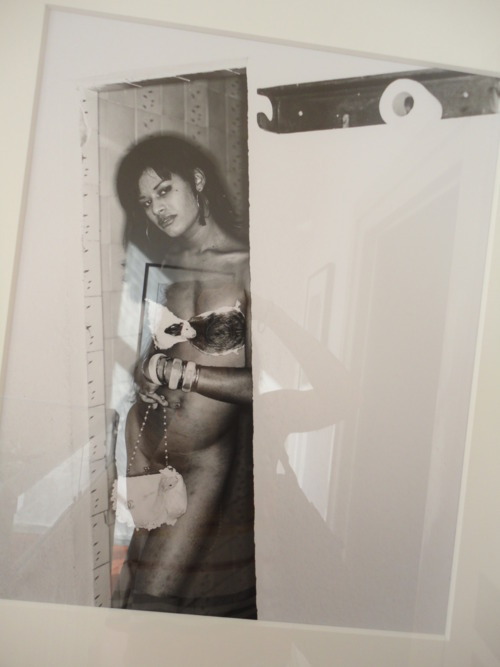
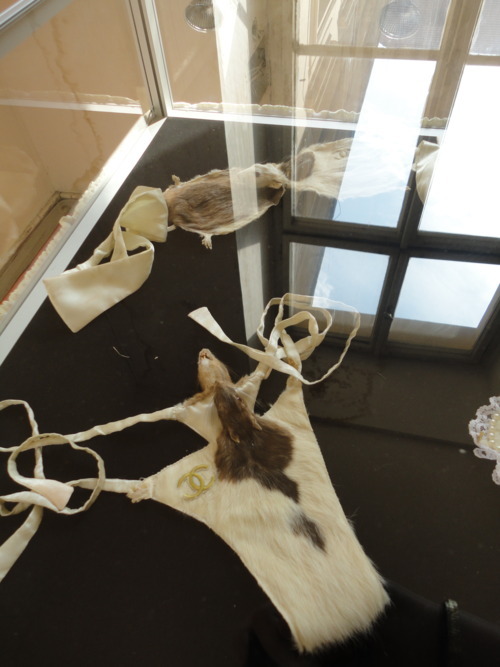
Four giant guns hang mid-air in a courtyard, aiming at each other. Nearby, a green Semtex pig flies over an ancient staircase. Why? Because a new art museum with a focus on young artists has breathed life into the empty Colloredo-Mansfeld palace.
The location of the Artbanka Museum of Young Art (AMoYA) couldn’t be better: just a few meters from Charles Bridge off Karlova street. Every day, thousands of people, mainly tourists, walk by. However, it is not only the location that makes this museum unique, but also the fact that it is focused primarily on young Czech and Slovak artists.
“Such a project was very much missing here, especially if you take into consideration the opinion of the wider public. Although there are some experts and theoreticians focused on young artists, the wider public has very little knowledge of it,” said museum manager Irena Satkeová. “People are more interested in big names and old art, and young art remains somehow forgotten. I believe our museum demonstrates what a pity it is to leave it aside. It is high-quality art, at least at the same level as the foreign art we admire.”
Entering the museum space, one thing is absolutely clear: This is not a typical art museum with large, silent rooms and strict custodians and security cameras monitoring your every move. The Colloredo-Mansfeld palace has an appropriate history for such a venture, including the first art exhibition of Krasoumná jednota (Fine Arts-skill Club), which was founded in 1835 by the Society of Patriotic Friends of the Arts. One of the purposes for that foundation was to support local young artists.
AMoYA thus inherited both the palace and the idea from an earlier era. The idea has lost nothing of its spark since its original 19th century conception, but one cannot say the same about the palace. During the communist era, the building was converted into flats, and beginning in 1953, the Academy of Sciences kept its archives there. During these years, many insensitive modifications were made to the building, leaving one to wonder how anyone could have been allowed to ruin such majestic architecture.
“We managed to prepare the palace for opening in just four weeks,” Satkeová said. “First, we wanted to make sure we could open the exhibition while the main tourist season was still ongoing, and the [quick preparation] was also the result of our enthusiasm. But we didn’t do a complete renovation; we did some basic renovations like painting and cleaning. We purposely left some of the space as it was because we wanted to show the absurd modifications made in the past, and also for a very prosaic reason: money.”
The exhibition is an impressive and lively mixture with many notable pieces, including a giant statue called Jesus Christ, Superstar(t) by Kamera Skura hanging in an ugly staircase hall in the position of a crucified man, only without the cross. Instead, the tights-wearing Jesus is actually turning on gymnast’s rings.
Provocation is one of the main means by which many young artists attract attention, but it would be a mistake to see nothing more in such work. This art is trying to critically name the maladies of our society and thus is offering an unusual look at our day-to-day reality.
AMoYA presents not just students of art or young artists but also their teachers and influential professors. One can even find the work of internationally established artists like Jiří Černický, whose green “Pegasus Semtex” from 1997 floats above a baroque staircase in the building. On display are also works by Milan Knížák, Jiří David and Lukáš Rittstein, to name but a few.
“Partly, we are trying to garner more attention [by including] these famous artists, but these are also university professors we cooperate with. We mainly present their disciples or followers, so we are trying to show the connection between those who are already established and famous and those who follow them,” Satkeová said.
AMoYA may have been opened in record time, but the idea of supporting young artists has been developing for quite a while. A few months before the museum opened its doors, the same team of collaborators established Artbanka, a business venture intended to support young artists by amassing a collection of work from young artists that private companies and public offices can rent.
According to Satkeová, the Artbanka team cooperates with a number of art universities and heads of ateliers to find young talent. There are, no doubt, many young artists who need support, and Artbanka offers a collection that may attract a lot of attention.
“Artists are most innovative and creative when they are searching for their own language,” Satkeová said. “The time when an artist leaves school and forms his own point of view is very important, and this is the time we focus on.”
http://www.praguepost.com/tempo/9291-artbanka-museum-of-young-art.html
All images (below) copyright: Ali Moss-Thomas, 2012
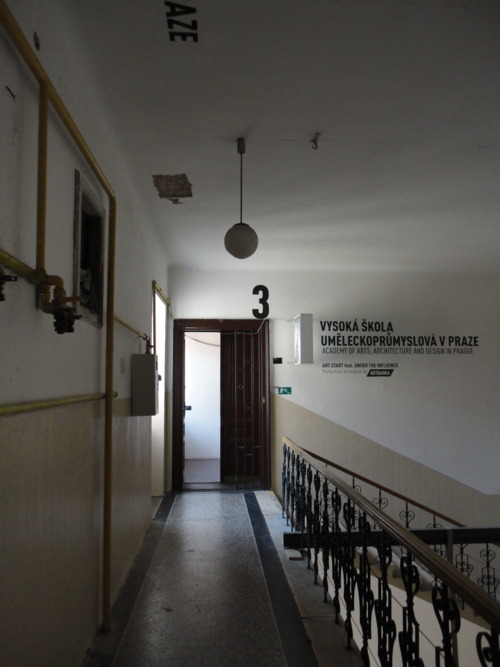
The main interior staircase on the right of the building, shown from the top floor.
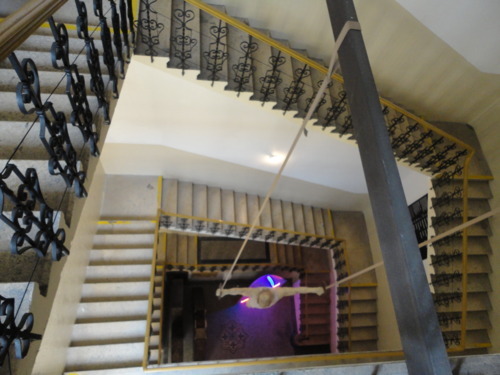
The interior of one of the main rooms in which exhibts are currently on display.

The exterior of the building with ‘guns’ on display.
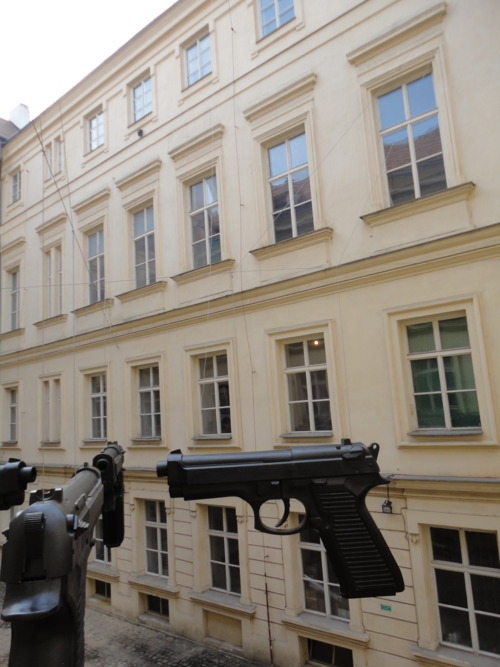

No comments:
Post a Comment